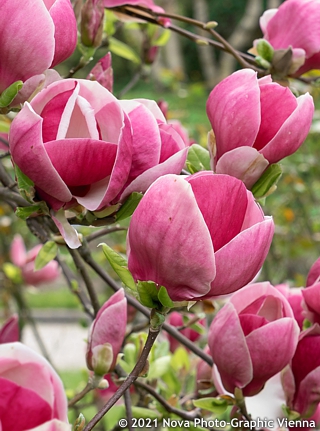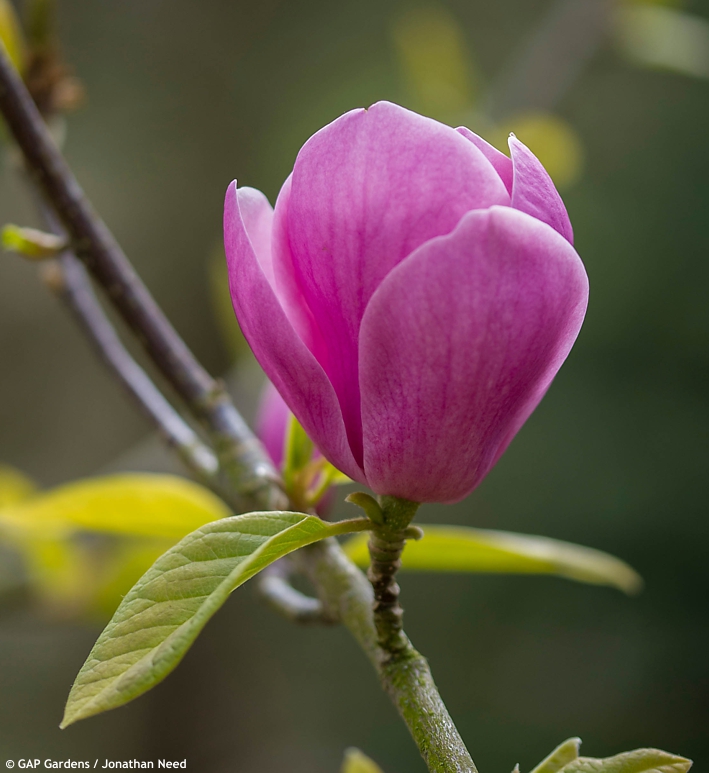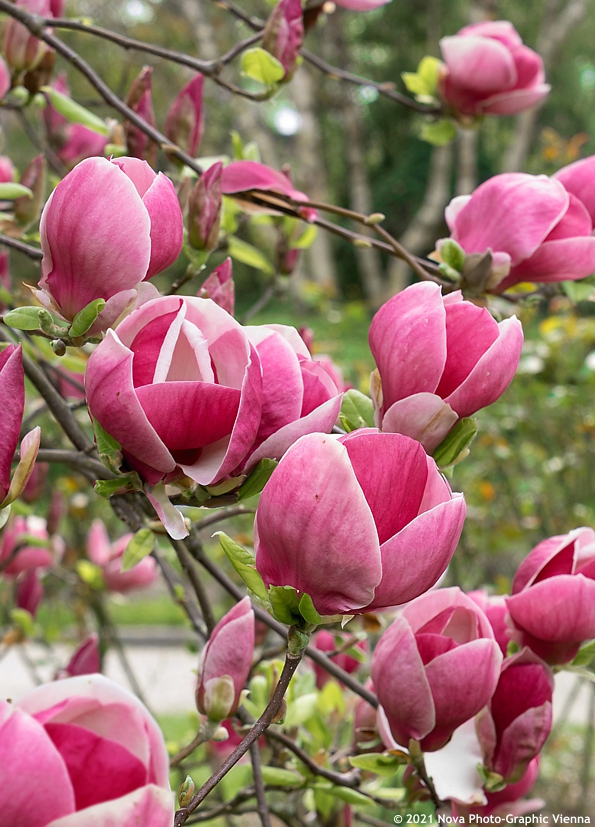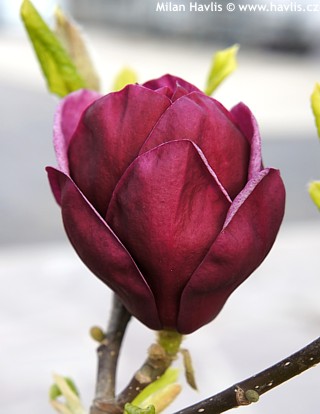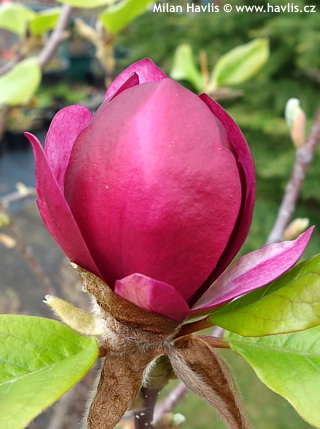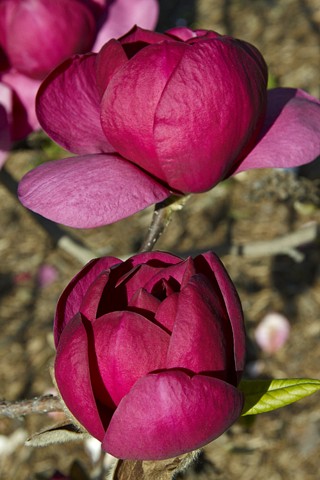Magnolia 'SWEET VALENTINE' Sweet Valentine magnolia
Someone has sweet seventeen, others may have Sweet Valentine. This is the name of one the many soulangeana type magnolias. And to have this rarity at home is a true win. It is a cross between magnolias “Sweet Simplicity” and “Black Tulip”, where both plants are crosses already. It was bred by Vance Hooper from New Zealand in late 1990´s.
What makes this hybrid so special? Thanks to one parent – “Black Tulip” – it has very goblet shaped flowers, quite wide at the bottom like a real tulip. The flower itself is not large, though. And why Valentine? The colour of the exterior of the petals is a glowing, rich reddish-purple which is a sort of red usually associated with Valentines Day. When the petals slightly curl outward at the edges they reveal a very light pink or nearly white interior. A remarkable feature is its precociousness – a seedling flowered the second year from planting, and a grafted planted only after one year. That made it an excellent plant for further cross-breeding experiments. As a matter of interest, it was used as a parent for a recently sought-after variety “Genie” which has been an amazing success among magnolia lovers.
Deciduous leaves are rather obovate with a notable tip, medium sized, mid to dark green. The shrub has a rounded shape. As this is a relatively new variety, a mature size of the plant is not recorded yet. But looking at the characteristics of its parents it is definitely supposed to belong to reduced-sized soulangeana varieties, growing to about 3m.
Magnolias are not supposed to be pruned. You can prune old shrubs if ill, or trim them to shape or to reduce size, or make an elementary cut to young plants of unsightly or unhealthy appearance. Do this as soon as possible after flowering to secure setting of flower buds for the following year. Be aware that each magnolia can respond differently to pruning.
Deciduous magnolias are quite easy plants. All they need is light, well-drained, acidic soil with equal moisture throughout the year. Once established they can do with occasional drought but will not look as nice as the ones with regular watering. Just pay attention to how to plant your magnolia. First, find it a spot where it will live forever and ever. It does not like transplanting. And as it makes shallow roots reaching well over its spread stay away from disturbing the roots by digging or messing about around it. Just cover the soil with bark mulch and do not plant anything else near it after say the second year after planting onwards. You could damage the very important top roots that absorb maximum moisture and nutrients from the soil. Also avoid planting magnolia too deep. Thus you could be digging its grave. It is fully hardy to USDA zone 5, perhaps 4 with protection. Just make sure it is not in a too exposed windy area. We still recommend mulching it well to keep it moist in any season.
Last update 15-12-2007

































